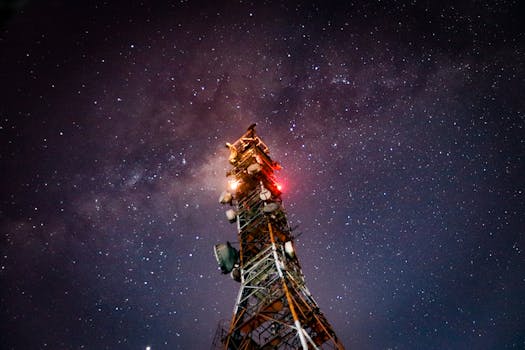
The Rise of Mega-Constellations: Latest Updates in Satellite Telecommunications
Mega-Constellations
The rise of Mega-Constellations is a significant development in satellite telecommunications, with several companies launching thousands of small satellites into low Earth orbit to provide global connectivity. This new approach to satellite telecommunications is transforming the way we communicate, offering faster, more reliable, and more affordable internet access to people around the world.
The concept of mega-constellations has been around for several years, but it gained significant momentum in 2019 when companies like SpaceX, Amazon, and OneWeb began launching their satellites. These constellations are designed to provide a network of interconnected satellites that can offer a range of services, including broadband internet, mobile connectivity, and Earth observation.
One of the key benefits of mega-constellations is their ability to provide global coverage, including in areas where traditional telecommunications infrastructure is lacking. This makes them an attractive option for remote or underserved communities, where access to reliable internet is limited.
Latest Updates
In recent years, there have been several significant developments in the field of mega-constellations. For example, SpaceX has launched over 3,000 satellites as part of its Starlink constellation, with plans to launch thousands more in the coming years. Amazon has also launched its Kuiper Systems constellation, which will provide broadband internet to underserved communities around the world.
OneWeb has launched over 500 satellites as part of its constellation, with plans to launch hundreds more in the coming years. These launches have significant implications for the future of satellite telecommunications, offering new opportunities for global connectivity and transforming the way we communicate.
Challenges and Opportunities
While the rise of mega-constellations offers many opportunities for global connectivity, it also poses several challenges. For example, the launch of thousands of satellites into low Earth orbit has raised concerns about space debris and the potential for collisions.
There are also concerns about the impact of mega-constellations on the night sky, with some astronomers warning that the satellites could interfere with astronomical observations.
Despite these challenges, the rise of mega-constellations is an exciting development in satellite telecommunications, offering new opportunities for global connectivity and transforming the way we communicate. As the technology continues to evolve, it will be important to address the challenges posed by mega-constellations and ensure that they are developed and launched in a responsible and sustainable manner.
Conclusion
The rise of mega-constellations is a significant development in satellite telecommunications, offering global connectivity and transforming the way we communicate. With several companies launching thousands of small satellites into low Earth orbit, these constellations are designed to provide a range of services, including broadband internet, mobile connectivity, and Earth observation.
While there are challenges associated with the launch of mega-constellations, the opportunities they offer for global connectivity are significant. As the technology continues to evolve, it will be important to address the challenges posed by mega-constellations and ensure that they are developed and launched in a responsible and sustainable manner.




